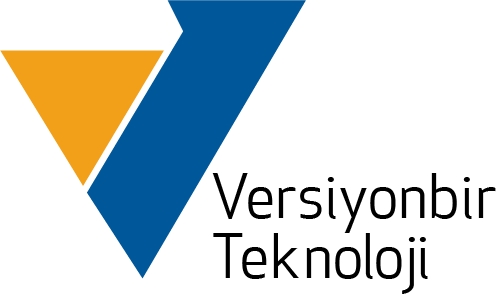Ethereum is the most popular second generation blockchain. The currency produced on this blockchain is called Ether. Ethereum is a decentralized blockchain platform that allows developers to build and deploy decentralized applications (DApps), creating a peer-to-peer network and used in the development of smart contracts.
Ethereum Merge is the merging of the Mainnet, the current execution layer of Ethereum, with the Beacon Chain, the new proof-of-stake (PoS) consensus layer. Merge will put an end to proof of work (PoW) for Ethereum and the transition to proof of stake (PoS) will be achieved. With this merge, the need for energy-intensive mining has been eliminated. Instead, it has been ensured that there is no need for intense energy, the production, verification, and adding processes of blocks in the blockchain are secured by using the token staked to the network, that is, locked, instead of miners.
Users commit to this by setting aside or “staking” their ETH to earn the right to create a block. Users are selected as validators according to the ETH they stake. To become a validator, it is necessary to have at least 32 ETH shares. Those who cannot afford 32 ETH can contribute to the network by staking their ETH in a pool to enjoy some of the rewards. The more ETH each validator stakes, the more blocks the validator will generate. After validators verify their block without any processing power, other contributors verify that the block is valid. When enough verifications are made, a new block is added to the network and the rewards are distributed in ETH proportional to each validator’s stake.
Slashing: Ethereum 2.0’s consensus mechanism has several rules designed to prevent attacks on the network. Any verifier found to violate these rules will be sanctioned. If a validator confirms a malicious transaction, they can lose all their shares. Authenticators who want to do anything bad to the network are detected. The detected validator is slashed. Slashing is the name given to the removal of a significant portion of the assets staked by a validator and banning that validator from the network. It is a mechanism used by PoS protocols to avoid harmful behavior and make validators more accountable.
Proof of work (PoW): Block creators are called miners. Miners need to solve complex math problems to produce blocks. The miner who solves the complex problem first gets the predetermined reward. The average new block generation time is between 12 seconds and 14 seconds. While performing these operations, computers that require high energy are used.
Proof of Stake (PoS): It is a consensus algorithm that decides who will verify the next block to verify mining transactions. Those who do this verification are called validators. Validators are selected based on how large a stake (coin amount) they have. These validators stake tokens on the blockchain to create and verify blocks. Validators earn rewards based on the amount they stake. The validator does not receive a block reward, but instead receives a network fee as a reward. Proof-of-stake is environmentally friendly as it does not use computers that would require energy consumption.
Beacon chain: The Beacon chain, known as Phase 0, is a proof-of-stake blockchain network that was launched on December 1, 2020. It was created as a separate blockchain to the Mainnet. It was created to ensure that the proof-of-stake consensus logic was robust and sustainable before it was activated on the Ethereum Mainnet. Beacon chain is the controller of the Ethereum PoS network, which manages the entire process of the PoS protocol and controls parallel chains.
Beacon was not processing Mainnet transactions initially. After it was decided to merge Beacon Chain with Mainnet, Beacon Chain became the transaction engine for all network data, including execution layer transactions and account balances.
What Will Ethereum Merge Change?
Ethereum Merge is a protocol upgrade on the Ethereum blockchain. It is Ethereum’s transition from the current Proof of Work system to the Proof of Stake system. With this merger:
1. PoS uses 99.95% less energy than PoW. There will be a huge reduction in energy consumption in the transition from PoW to PoS. Ethereum will produce significantly less carbon.
2. Merge is designed to make the network more efficient, sustainable, inclusive and environmentally friendly.
3. In the transition from Pow to PoS, validators will replace miners.
4. Since computers that require high energy will not be used, energy savings will be achieved.
5. Secures the network using Staked ETH instead of high-energy crypto mining. The more ethereum staked, the more secure the blockchain will be.
6. There is no need for expensive equipment. If a user has 32 ETH, user can be a validator.
Crypto Mining After Ethereum Merge
Miners will be greatly affected during the Merge process. After Merge, miners will not be able to earn PoW rewards. Instead, validators will start locking their earnings into the PoS system. After Merge, the need for miners is removed. In this case, expensive equipment used in mining may also become dysfunctional. Validators will replace miners.
Roadmap for Ethereum 2.0:
The Merge: Transition from Proof of Work to Proof of Stake.
The Surge : The shard chains to be brought to the Existing Network are an important step in improving Ethereum’s scalability and capacity.
The Verge : A powerful upgrade based on Merkle proofs that optimizes data storage for Ethereum Nodes.
The Purge: It’s about data storage. The hard disk space required for validators will be reduced, and network congestion will be alleviated by streamlining storage.
The Splurge : With Splurge, the 5-stage upgrade will be completed. After the previous phases, several important tests will be carried out to ensure the proper functioning of the network.



